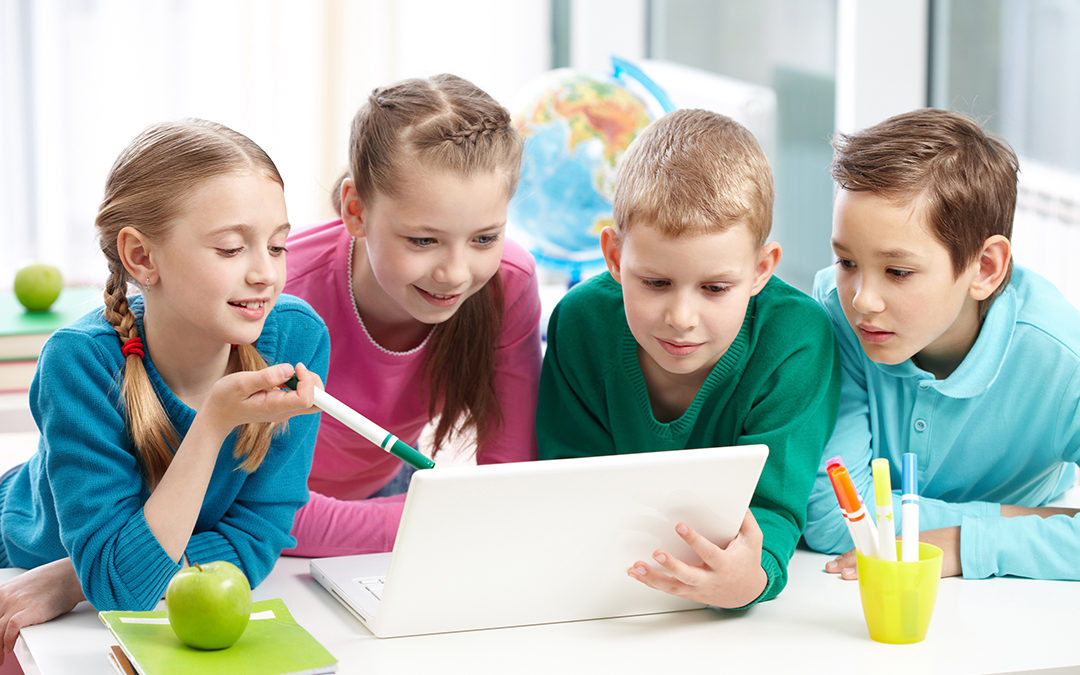Computational thinking has become important to teaching problem solving in education because it empowers students with processes to develop strategic solutions to complex problems, essentially “leveling up” their skills, or creating algorithms that can make future processes more effective. This enables students to take on more complex challenges and prepare for real-world applications.
Decomposition in Computational Thinking
While the process of computational thinking is multifaceted, there is one key to computational thinking that is essential for success: decomposition. Decomposition is the process of breaking a complex task or problem into smaller, more manageable pieces. From this decomposition, students can eliminate unnecessary information, identify patterns and begin the process of identifying which parts of the problem are most important, how to solve or complete each step, and how those parts can be put together for a clear and unified step-by-step solution.
Why is the Decomposition Technique Required in Computational Thinking?
The technique of decomposition is required in computational thinking because it breaks complex tasks into subtasks while developing a sequentially-based understanding of the problem. This allows unnecessary information to be discarded, patterns to be identified, relevant information to be extracted and the process of step-by-step resolution to be defined for a more effective problem-solving process.
By definition, computational thinking is the process of tackling complex problems and finding a clear, step-by-step solution that can be replicated. Decomposition, therefore, is essential to this process as it includes breaking a task into several sub-tasks, helping to align the task to a step-by-step solution.
Another reason decomposition in computational thinking is important is because it allows each subtask to be examined more closely. This not only helps to categorize information as essential or non-essential, but also empowers the problem-solver with a better ability to analyze each specific part of the task or challenge to more effectively develop a reasonable solution.
Examples of Decomposition in Computational Thinking
Below are some real-world examples of utilizing decomposition in computational thinking:
- You have to clean your house. Instead of facing the task as a whole, you practice decomposition by breaking the task into a to-do list with multiple subtasks.
- To build shelves for a storage space, you practice decomposition by measuring the space, creating a blueprint or plan to determine the size of the shelves and the materials you need to accomplish the task. Next, you purchase the supplies and cut the lumber to size, then install one wall of shelves at a time.
- In science, to prove or disprove a hypothesis, you practice decomposition by creating subtasks including background research, observation, generating a hypothesis, determining which variables to test, performing experiments and drawing a conclusion.
Final Thoughts
Consider how often computational thinking appears in your everyday life. Do you naturally use decomposition and computational thinking to resolve a challenge? For more information about computational thinking and how they apply to students, explore some of our most recent articles:
A Crash Course in Digital Footprints: Teaching K-12 Students the Importance of Online Contributions & Interactions
In today's interconnected world, every click, post and search we make online contributes to our digital footprint, a complex and often permanent trail of data that defines our presence in the digital realm. A digital footprint encompasses everything from the social...
Digital Divide Statistics: The 4 Digital Divides Affecting Students
Flashback to the mid-1990s: Vanilla Ice released “Ice Ice Baby;” Ross and Rachel were on a break; and Google, Amazon, and Hotmail (RIP) graced the internet. Oh, the memories. At the same time–and connected to accelerating internet technologies like Google–a digital...
10 Principles of Respectful and Courteous Online Behavior: A Comprehensive Guide for Educators
Today, where much of our communication takes place online, teaching students the importance of respect and courtesy in their digital interactions is critical for their productive and ethical contribution to the digital world, as well as supporting their own online...
How TA-TEKS Can Improve Future-Readiness in Texas Students
Texas is becoming a hub for high-demand industries such as technology, healthcare, energy, and manufacturing. These sectors are increasingly reliant on advanced digital literacy and technology skills, making it important that the state’s educational systems prepare...
How Computer Fundamentals Equip Students for Success
Understanding the basics of computer science is no longer optional for students to be future-ready, as the world becomes increasingly reliant on digital technologies not only for careers, but for everyday life. Computer fundamentals provide the skills and knowledge...
Teaching Students to Think Like Programmers | Learning.com
Recent discussions in education emphasize the importance of teaching students to think like computer programmers. Computational thinking involves problem-solving skills such as decomposition, pattern recognition, abstraction and algorithm design. Educators are...
Defining Computational Thinking
Computational thinking is a problem-solving process that involves various techniques and thought processes borrowed from computer science. It includes skills such as decomposition, pattern recognition, abstraction and algorithmic thinking, enabling individuals to...
Supporting Texas Students in Becoming Tech-Strong: Expert Strategies
The rapidly evolving technological landscape means students must develop robust digital skills to thrive in future careers. Texas recognizes this through its substantial educational framework, the Texas Essential Knowledge and Skills for Technology Applications...
Algorithmic Thinking: A Critical Skill for Today’s Students
For many people, “algorithmic thinking” conjures visions of a Good Will Hunting whiteboard with extensive equations and symbols long forgotten in our educational memory. For others familiar with coding curriculum, it’s an important step in the computer programming...
Navigating a Successful Digital Curriculum Implementation
Implementing a digital curriculum might seem overwhelming, but with the right strategy and teamwork, you can ensure a smooth and successful rollout. Here’s how to get started: 1. Assess Your Current Situation Begin by evaluating your district’s technology...
Magic Behind Teaching and Learning
The teaching and learning process can be magical for educators and students alike. However, creating an effective learning environment requires purposeful planning, an understanding of educational theories, and mastery of digital tools. Let's explore how to bridge the...
How Were the TEKS Created & What is Its Significance?
The Texas Essential Knowledge and Skills (TEKS) framework details the educational standards in the state of Texas, providing a comprehensive outline of what students are expected to learn from kindergarten through 12th grade. This framework is essential not only for...

Learning.com Team
Staff Writers
Founded in 1999, Learning.com provides educators with solutions to prepare their students with critical digital skills. Our web-based curriculum for grades K-12 engages students as they learn keyboarding, online safety, applied productivity tools, computational thinking, coding and more.
Further Reading
Teaching Students to Identify Cyberbullying: A Guide for K-12 Educators
In today’s interconnected world, technology is becoming an increasingly integral part of children’s lives, offering countless opportunities for...
Integrating AI Into Your Curriculum for K-12 Education
Find out how AI curriculum can transform K-12 education, boosting engagement and fostering critical thinking. Get started with essential insights and examples.
Teaching AI: Ethical Considerations for High School Students
Teaching AI in high schools comes with ethical questions. Discover key considerations for educators introducing AI to young learners
















